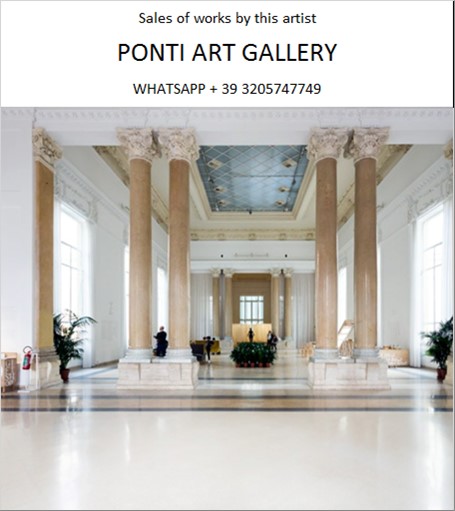Ponti Art Gallery is interested in buying and selling works
of art by this artist.

Francis Picabia Biography
Francis Picabia, born Francis-Marie Martinez de Picabia on January 22, 1879, in Paris, was a multifaceted French avant-garde artist whose work spanned painting, poetry, and typography. His diverse and prolific career made him one of the early 20th century's most influential and enigmatic figures in the art world. Picabia's artistic journey was marked by a relentless pursuit of innovation and a penchant for provocation, which led him to be associated with various art movements, including Impressionism, Cubism, Dadaism, and Surrealism.
Picabia was born into a wealthy Spanish-French family, which afforded him the freedom to explore his artistic inclinations without financial constraints. His father, Francisco Vicente Martinez Picabia, was a Cuban diplomat, and his mother, Marie Cecile Davanne, came from a French bourgeois family. Tragically, Picabia lost his mother to tuberculosis when he was only seven years old, a loss that would cast a shadow over his early life.
Despite the early tragedy, Picabia's privileged upbringing allowed him to study at the prestigious École des Arts Decoratifs in Paris. His early works were influenced by Impressionist painters such as Alfred Sisley and Camille Pissarro, and he quickly gained recognition for his landscapes. However, Picabia's restless spirit soon led him to experiment with various avant-garde styles.
By 1909, Picabia had embraced the radical shift towards non-objective art, and his work began to reflect the influences of Fauvism and Cubism. His participation in the 1913 Armory Show in New York City marked a significant moment in his career, as it introduced him to the American avant-garde scene and brought his work international acclaim.
Picabia's involvement with the Dada movement began during World War I, a period when he sought refuge in New York and later in Barcelona. It was in New York that he met influential figures such as Marcel Duchamp and Man Ray, and together they helped shape the early development of Dada. Picabia's Dadaist period was characterized by his irreverent humor and his challenge to traditional notions of art. He published the Dada periodical 391, which became a platform for his and others' radical ideas.
Despite his significant contributions to Dada, Picabia grew disillusioned with the movement and denounced it by 1921. He then briefly engaged with the Surrealist circles in Paris, but as was typical of his mercurial nature, he soon distanced himself from them as well.
Throughout the 1920s and 1930s, Picabia's style continued to evolve. He experimented with different materials and techniques, including the use of household paint, feathers, and pasta on canvas. One of his most celebrated series from this period was the "Transparencies," which layered images from different sources to create complex, multi-dimensional works.
Picabia's later years were marked by a return to abstract painting, and he became a forerunner of Art Informel. However, his popularity waned in the years leading up to his death. He continued to exhibit his work and published his writings until 1951 when arteriosclerosis hindered his ability to paint.
Francis Picabia died on November 30, 1953, in the same Parisian house where he was born. His legacy is that of a pioneering artist who refused to be confined by any single style or movement. His work, which often oscillated between the irreverent and the profound, continues to influence contemporary artists and remains a testament to his belief in the transformative power of art.
Francis Picabia Quotes and
Sales of Works
Ponti Art Gallery selects and deals with paintings by the
artist. Upon request, we provide free estimates and
evaluations, communicate prices, quotations, and current
market values.
If you are interested in BUYING or SELLING works by the
artist, contact us immediately.
If you wish to sell or receive an evaluation of the
works:
Send us a frontal photo of the painting, one of the back,
and one of the signature. Also, indicate the dimensions of
the work. Inform us about the purchase origin of the work
and any kind of available documentation (purchase
receipts, certificates of authenticity, publications). One
of our operators will respond to you on the same day. We
guarantee maximum confidentiality and extreme
professionalism.
If you wish to purchase works by the painter: Contact us
and let us know your request. We will inform you about the
available works. We also offer the possibility to
subscribe to our NEWSLETTER, through which you will be
informed at the beginning of each month about the latest
acquisitions of the art gallery.
You can send us pictures of the work:
